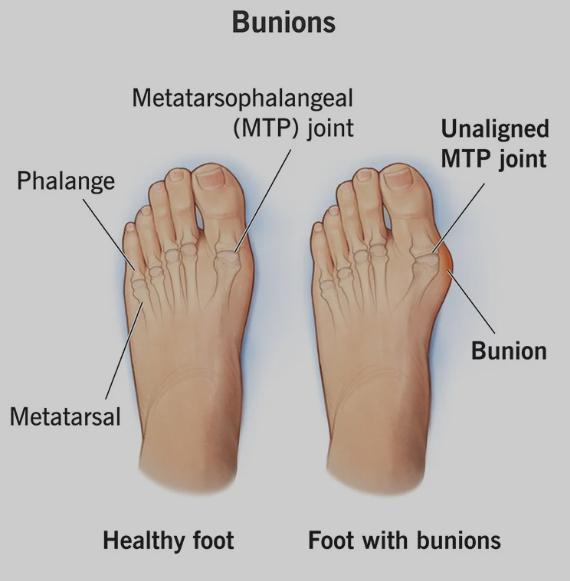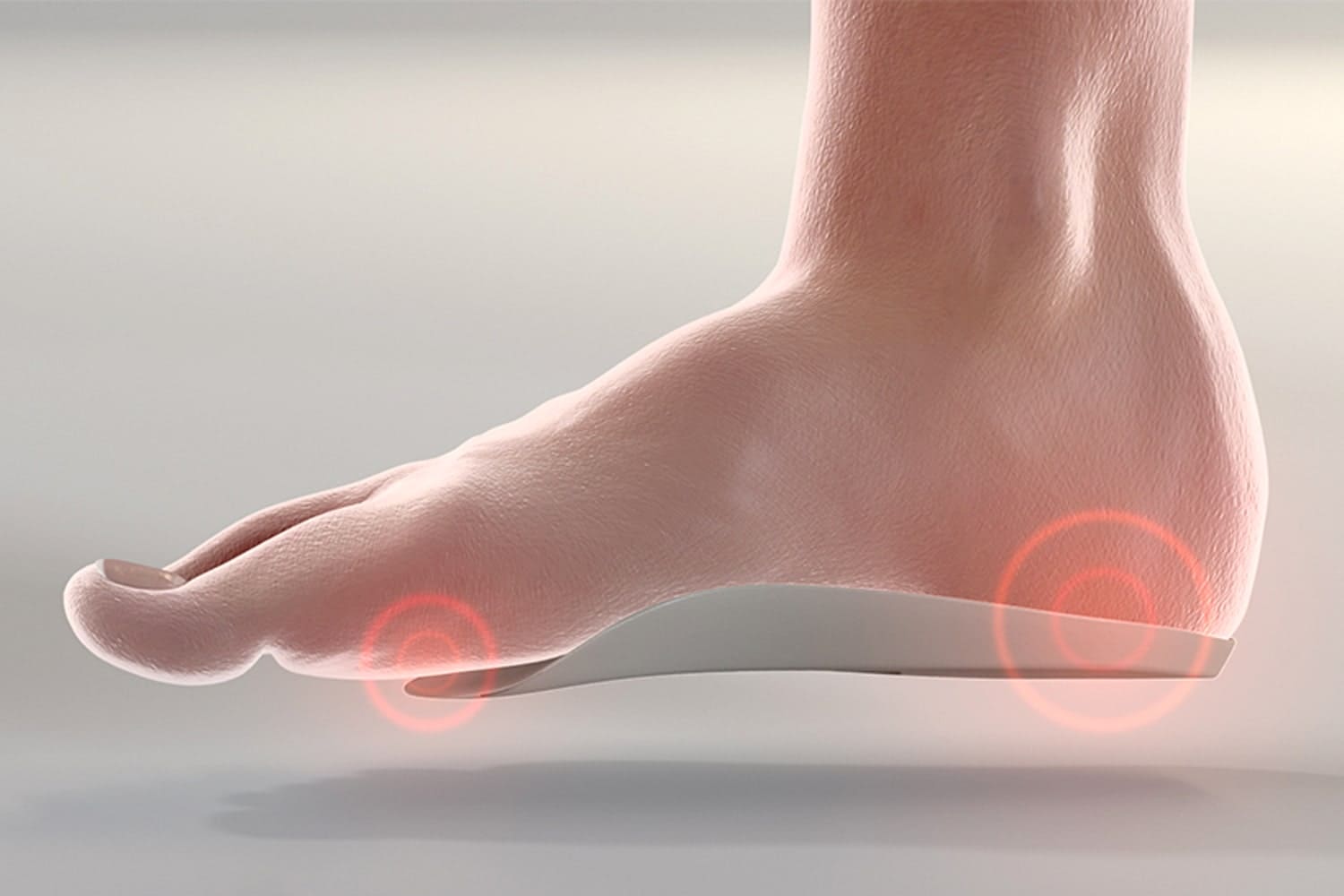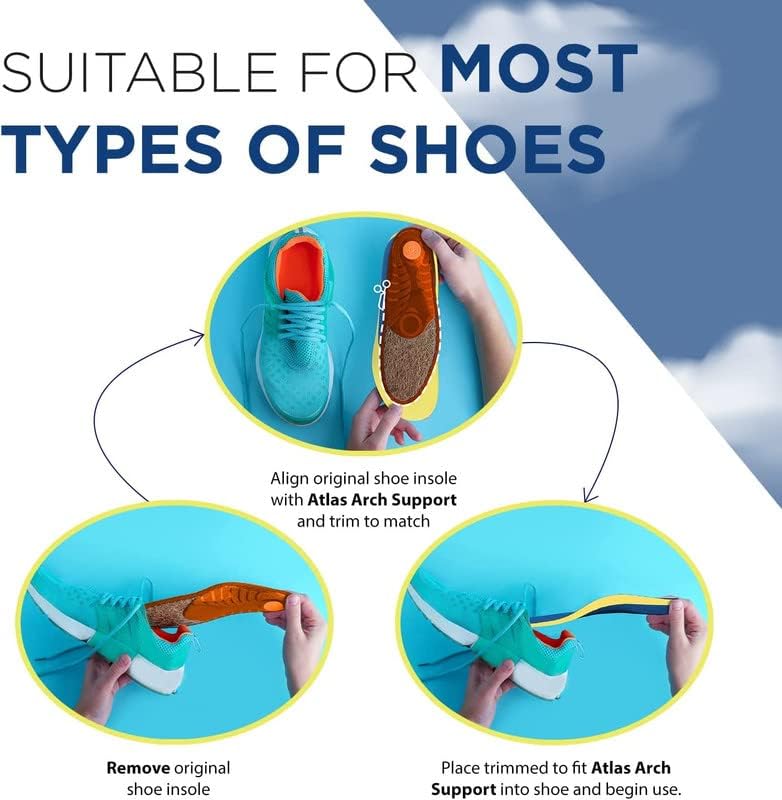Discover how Atlas Arch Support Insoles can transform your bunion discomfort into bliss. Explore the innovative solution that offers unparalleled relief, expertly designed for ultimate comfort.
Introduction
Are you tired of battling bunion pain and discomfort? Ready to take charge of your foot health and well-being? Dive into the world of Atlas Arch Support Insoles – a game-changer that’s revolutionizing foot comfort for those dealing with bunions. In this article, we’ll explore how these insoles, armed with cutting-edge technology and thoughtful design, can make a world of difference. Say goodbye to bunion agony and hello to walking on clouds. Let’s embark on this journey to happier, healthier feet together!
Table of Contents
Understanding Bunions (Hallux Valgus)
Bunions, medically referred to as Hallux Valgus, are a prevalent foot condition characterized by the development of a bony bump at the joint of the base of the big toe. This condition arises when the big toe begins to lean towards the second toe, causing a misalignment of the joint, resulting in a protruding bump. Understanding the causes, recognizing the symptoms, and knowing effective management strategies are essential for individuals dealing with bunions.

Symptoms of Bunions
Bunions manifest with various symptoms that provide insights into the nature of this condition. Recognizing these symptoms is crucial for timely diagnosis and appropriate management.
Bony Protrusion: The Telltale Sign
- The hallmark symptom of bunions is the visible bony bump at the base of the big toe. This protrusion is not merely a cosmetic concern; it is a clear indicator of the underlying joint misalignment.
- As pressure and stress persist, the big toe continues to deviate towards the other toes, leading to the characteristic bunion formation.
Swelling, Redness, or Tenderness: The Unseen Struggle
- Alongside the bony protrusion, individuals with bunions may experience swelling, redness, or tenderness around the base of the big toe. These signs are the body’s natural responses to the structural changes in the joint.
- Identifying and addressing these inflammatory signs early can contribute to better symptom management and relief.
Misalignment of the Big Toe: The Silent Shift
A less conspicuous but equally critical symptom is the misalignment of the big toe concerning the rest of the foot. The deviation of the toe towards the smaller toes can significantly alter the foot’s anatomy.
Recognizing and acknowledging this misalignment is pivotal in addressing the root cause of bunions.
Formation of Calluses: The Friction Consequence
The constant friction caused by the misaligned big toe rubbing against the second toe often leads to the formation of calluses. These hardened, thickened areas of skin develop as the body’s protective response against ongoing friction.
While calluses may seem benign, they underscore the continuous stress on the foot and the need for intervention.
Decreased Movement and Stiffness: The Joint Strain
As bunions progress, individuals may notice a decrease in the movement of the big toe, accompanied by stiffness in the joint. The misalignment and structural changes affect the toe’s range of motion, resulting in a sense of restriction.
Addressing this stiffness early can contribute to maintaining joint flexibility.
Difficulty in Wearing Regular Shoes: The Footwear Challenge
One of the most tangible and immediate challenges posed by bunions is the difficulty in wearing regular shoes. The misalignment and bony protrusion create a situation where conventional footwear may cause discomfort or pain.
Understanding this limitation is essential for making informed choices regarding footwear.
Causes and Risk Factors of Bunions
Understanding the underlying causes and risk factors associated with bunions is crucial for both prevention and effective management. While bunions have genetic components, environmental elements also play a significant role in their development.

Genetic and Environmental Interplay
Bunions result from a complex interplay of genetic predisposition and environmental factors. While genetics play a role, environmental influences can trigger or exacerbate bunion development.
Recognizing this interplay is essential for a comprehensive approach to bunion care.
Overpronation: A Hereditary Inclination
A significant contributor to bunions is the tendency to overpronate, which involves rolling the foot inward when walking. This biomechanical aspect can have a hereditary component.
Individuals with family members exhibiting overpronation may be more predisposed to developing bunions.
Prolonged Pressure on the 1st MTP Joint
Prolonged pressure against the inside portion of the first metatarsophalangeal (MTP) joint is a common cause of bunions. This pressure often arises from wearing pointed-toe shoes or footwear that is too tight.
Constriction forces the big toe to deviate towards the smaller toes, leading to the formation of the bony protrusion seen in bunions.
Structural Defects in the Foot
Structural defects in the foot can contribute to bunion development by altering the distribution of weight and pressure on the foot. These defects may impact toe alignment.
Addressing these structural issues is crucial for preventing and managing bunions effectively.
Underlying Health Conditions: Arthritis and Joint Health
Certain medical conditions, such as arthritis, can affect joint health and contribute to bunion development. Arthritis-induced changes in joint structure and function can accelerate misalignment of the big toe.
This may lead to the formation of bunions as an additional consequence of arthritis.
Understanding the causes and risk factors of bunions empowers individuals to take proactive steps in preventing their development and effectively managing existing bunions. Timely intervention and lifestyle modifications can help alleviate symptoms and improve overall foot health.
Treatment and Management of Bunions

Effectively managing bunions, or Hallux Valgus, involves a combination of strategies aimed at relieving pain and impeding the progression of this deformity. Key aspects of treatment focus on lifestyle adjustments and supportive measures.
Choosing Proper Footwear: A Fundamental Step
The Importance of the Right Fit:
Selecting footwear with a wide and roomy toe box is foundational in bunion treatment. Shoes that accommodate the width of the foot help reduce pressure on the bunion, minimizing discomfort and slowing down the progression of the deformity.
Prioritizing comfort and proper fit is essential for individuals dealing with bunions.
Orthotics and Insoles: Tailored Support
Customized Solutions for Pronation:
Orthotics, whether custom-made or over-the-counter arch supports, play a pivotal role in bunion management. These inserts are designed to control pronation, ensuring that the foot maintains optimal alignment.
By distributing pressure evenly across the foot and providing shock absorption, orthotics reduce stress on the bunion, offering significant relief from pain.
Over-the-Counter Convenience:
For those seeking immediate support, over-the-counter arch supports are a convenient option. These inserts are readily available and can be easily incorporated into existing footwear.
While not personalized to the same extent as custom orthotics, they still contribute to better foot mechanics and comfort.
Pain Management: Addressing Discomfort
Over-the-Counter Pain Relievers:
Over-the-counter pain relievers, such as nonsteroidal anti-inflammatory drugs (NSAIDs), can be used to manage pain and reduce inflammation associated with bunions. It’s essential to use these medications according to recommended guidelines and under the guidance of a healthcare professional.
Physical Therapy: Targeted Exercises
Strengthening and Stretching:
Engaging in physical therapy that includes targeted exercises for foot strengthening and stretching can be beneficial. These exercises aim to improve the flexibility of the toes, enhance joint mobility, and address muscle imbalances.
Physical therapy can complement other treatment measures, contributing to overall bunion management.
Atlas Arch Support Insoles: A Recommended Solution
Atlas Arch Support insoles can be highly beneficial for individuals with bunions due to several key features:
Pronation Control
Bunions are often exacerbated by overpronation, where the foot rolls inward excessively during walking. Atlas Arch Support insoles are designed to control and stabilize this pronation.
By maintaining the foot in a more neutral position, they help reduce the internal stress on the big toe joint, which can slow the progression of bunions.
Even Weight Distribution
These insoles help distribute body weight more evenly across the foot. This reduces the pressure on the bunion area, alleviating pain and discomfort associated with standing or walking for extended periods.
Improved Alignment:
By supporting the arch and aligning the foot properly, Atlas Arch Supports can reduce the strain on the big toe joint. Proper alignment is crucial in managing bunion pain and preventing further deformity.
Shock Absorption
The cushioning effect of these insoles can absorb the impact while walking or running, reducing the stress on the bunion. This is particularly beneficial in minimizing discomfort and pain.

Customizable Fit
Many Atlas Arch Support insoles are customizable or available in different sizes and shapes. This ensures a better fit for individual foot shapes and sizes, providing targeted support where it’s needed most.
Enhanced Comfort
By improving overall foot comfort and reducing pressure points, these insoles can make it easier for individuals with bunions to engage in daily activities without experiencing significant discomfort.
Preventive Care
For those at risk of developing bunions, such as individuals with flat feet or those who overpronate, using Atlas Arch Support insoles can be a preventive measure.
By addressing the underlying issues that contribute to bunion formation, these insoles can help prevent or delay their onset.
FAQ Section
Q1: What sets Atlas Arch Support Insoles apart from other solutions?
- A: Atlas Arch Support Insoles are a unique blend of innovation and expertise. Their precise design and advanced materials provide superior pronation control, even weight distribution, and unmatched comfort.
Q2: Can these insoles really alleviate bunion pain?
- A: Absolutely! By stabilizing your foot’s alignment and reducing pressure on the bunion, Atlas Arch Support Insoles offer effective relief. Their shock absorption properties ensure a comfortable walking experience.
Q3: Are these insoles suitable for preventive care too?
- A: Yes, they are. Whether you’re already dealing with bunions or want to prevent them, Atlas Arch Support Insoles address the root causes, making them ideal for both therapeutic and preventive use.
Q4: Do they come in different sizes for a customized fit?
- A: Yes, Atlas Arch Support Insoles are available in various sizes and shapes, ensuring a personalized fit for your unique foot anatomy. It’s all about enhancing your comfort.
Conclusion
In your quest for relief from bunion discomfort, Atlas Arch Support Insoles emerge as a transformative solution. They redefine the way you experience foot comfort, providing you with not only relief from pain but also a path to healthier feet. Step into a world where discomfort is replaced with ease, and bunion-related limitations become a thing of the past. Embrace the power of Atlas Arch Support Insoles and revolutionize your journey to pain-free, blissful walking. Your feet deserve the very best, and Atlas Arch Support Insoles deliver just that. Experience the change today!










I am sure this piece of writing has touched all
the internet viewers, its really really nice piece of writing on building up new webpage.